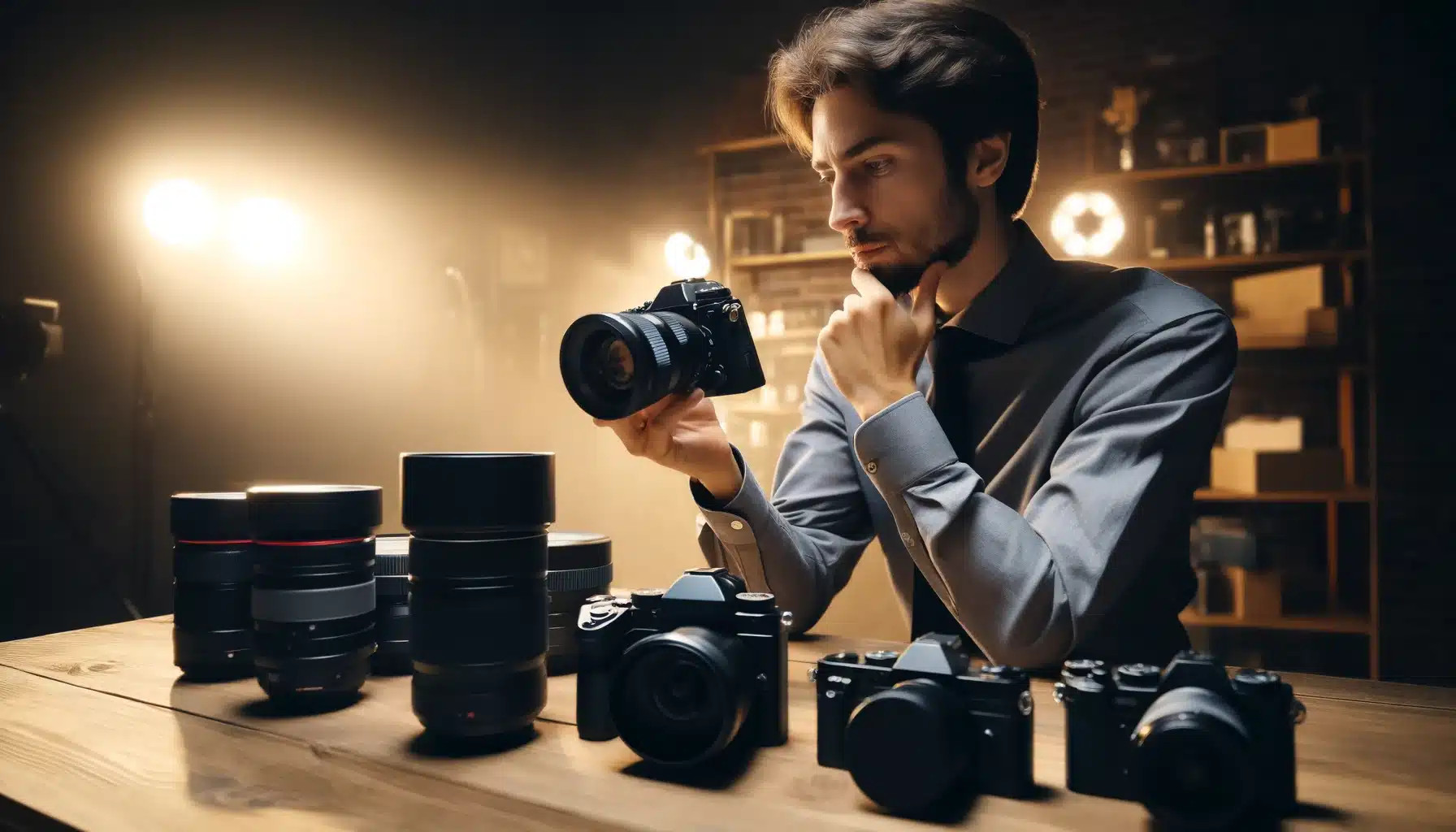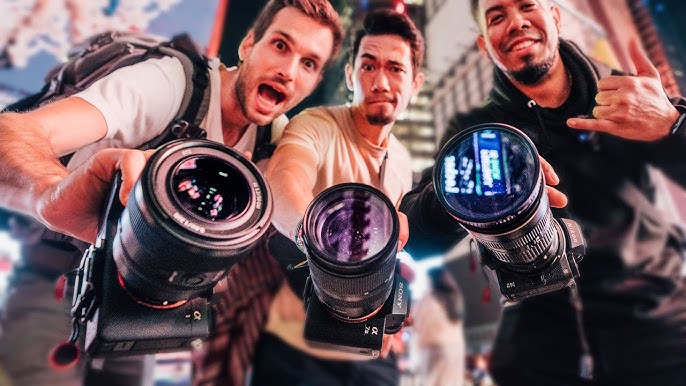Mastering the Lens: Uncovering Modern Photography Trends and Techniques

28-11-2024, 03:46 Admin 1 384 0
The canvas of modern photography is a diverse space, marred by innovative trends and novel techniques. One cannot merely classify photography anymore into whether it is a hobby or professional. The industry has evolved, the lines have blurred, and in the heart of this magnificent chaos, a distinct language of images has been born, speaking volumes about our times, our society and the unique perspectives of individual photographers.
At the heart of every photo lies the photographer's interpretation of it, transformed from what the lens captures. Yet equally vital is the symbiotic relationship between the lens and the technology supporting it. The rise in social media platforms has evolved alongside user-generated content, fostering unique trends that shift from spontaneous snapshots to consciously crafted images, each empowering the casual hobbyist to the seasoned professional.
Firstly, let's dive into the horizon of computational photography, an advancement that has revolutionized the modern photographic landscape. In layman's terms, computational photography uses digital technology to enhance or extend the capabilities of digital photography. High Dynamic Range (HDR), Panorama-stitched images, and focus stacking are some examples of this trend in action.
Take Apple's Deep Fusion, for example, a computational photography tool that delivers stunningly detailed texture and reduced noise in photos. Exclusive to the iPhone 11 and newer models, it uses machine learning and artificial intelligence to analyze each pixel of a photo. It then knits together the best aspects of multiple shots into a single, optimized image, bringing an entirely new level of detail and precision to mobile photography.
Next on the list is mirrorless technology, a buzz-worthy topic amongst modern photographers. A mirrorless camera eliminates the mirror's need in a DSLR camera, reducing vibration and noise and allowing faster continuous shooting. Notably, these cameras are packed with cutting-edge tech, such as rapid-fire shooting, 4K video capturing capabilities, and advanced autofocus. The Sony Alpha a7 III, for instance, features a full-frame 24.2MP Exmor R BSI CMOS sensor and an updated BIONZ X image processor, which lends itself to fast 10 fps continuous shooting.
Lastly, with the rise of remote shooting due to the ongoing pandemic, Virtual Photoshoots have become crucial. With high-speed internet, updated webcam technology, and powerful hardware, photographers can shoot a model virtually, anywhere in the world. Virtual photoshoots are a testament to the adaptability of the photography industry in adopting new technology and utilizing it for its survival.
Furthermore, efficient use of resources applies not just to the tech driving the photography but also in editing tools crucial in redefining and representing the photographer's vision. Adobe Lightroom and Photoshop are among the most popular tools, succeeding in transforming the mundane into the magical via non-destructive editing, allowing for innovative expression without damaging the initial photograph.
Photography is truly an art form, a creative expression that blends the physical world and the photographer's unique perspective. As this union's complexity deepens and the technological advances march onwards, the life-scape on this photographic frontier will continue to be dynamic, and filled with countless future possibilities. Therefore, to master the lens in this evolving landscape is not just about knowing your camera inside out, but also about staying up-to-date with technological advances that allow you to capture and portray your art in ways that were previously inconceivable.
At the heart of every photo lies the photographer's interpretation of it, transformed from what the lens captures. Yet equally vital is the symbiotic relationship between the lens and the technology supporting it. The rise in social media platforms has evolved alongside user-generated content, fostering unique trends that shift from spontaneous snapshots to consciously crafted images, each empowering the casual hobbyist to the seasoned professional.
Firstly, let's dive into the horizon of computational photography, an advancement that has revolutionized the modern photographic landscape. In layman's terms, computational photography uses digital technology to enhance or extend the capabilities of digital photography. High Dynamic Range (HDR), Panorama-stitched images, and focus stacking are some examples of this trend in action.
Take Apple's Deep Fusion, for example, a computational photography tool that delivers stunningly detailed texture and reduced noise in photos. Exclusive to the iPhone 11 and newer models, it uses machine learning and artificial intelligence to analyze each pixel of a photo. It then knits together the best aspects of multiple shots into a single, optimized image, bringing an entirely new level of detail and precision to mobile photography.
Next on the list is mirrorless technology, a buzz-worthy topic amongst modern photographers. A mirrorless camera eliminates the mirror's need in a DSLR camera, reducing vibration and noise and allowing faster continuous shooting. Notably, these cameras are packed with cutting-edge tech, such as rapid-fire shooting, 4K video capturing capabilities, and advanced autofocus. The Sony Alpha a7 III, for instance, features a full-frame 24.2MP Exmor R BSI CMOS sensor and an updated BIONZ X image processor, which lends itself to fast 10 fps continuous shooting.
Lastly, with the rise of remote shooting due to the ongoing pandemic, Virtual Photoshoots have become crucial. With high-speed internet, updated webcam technology, and powerful hardware, photographers can shoot a model virtually, anywhere in the world. Virtual photoshoots are a testament to the adaptability of the photography industry in adopting new technology and utilizing it for its survival.
Furthermore, efficient use of resources applies not just to the tech driving the photography but also in editing tools crucial in redefining and representing the photographer's vision. Adobe Lightroom and Photoshop are among the most popular tools, succeeding in transforming the mundane into the magical via non-destructive editing, allowing for innovative expression without damaging the initial photograph.
Photography is truly an art form, a creative expression that blends the physical world and the photographer's unique perspective. As this union's complexity deepens and the technological advances march onwards, the life-scape on this photographic frontier will continue to be dynamic, and filled with countless future possibilities. Therefore, to master the lens in this evolving landscape is not just about knowing your camera inside out, but also about staying up-to-date with technological advances that allow you to capture and portray your art in ways that were previously inconceivable.
Related News
Leave a Comment


